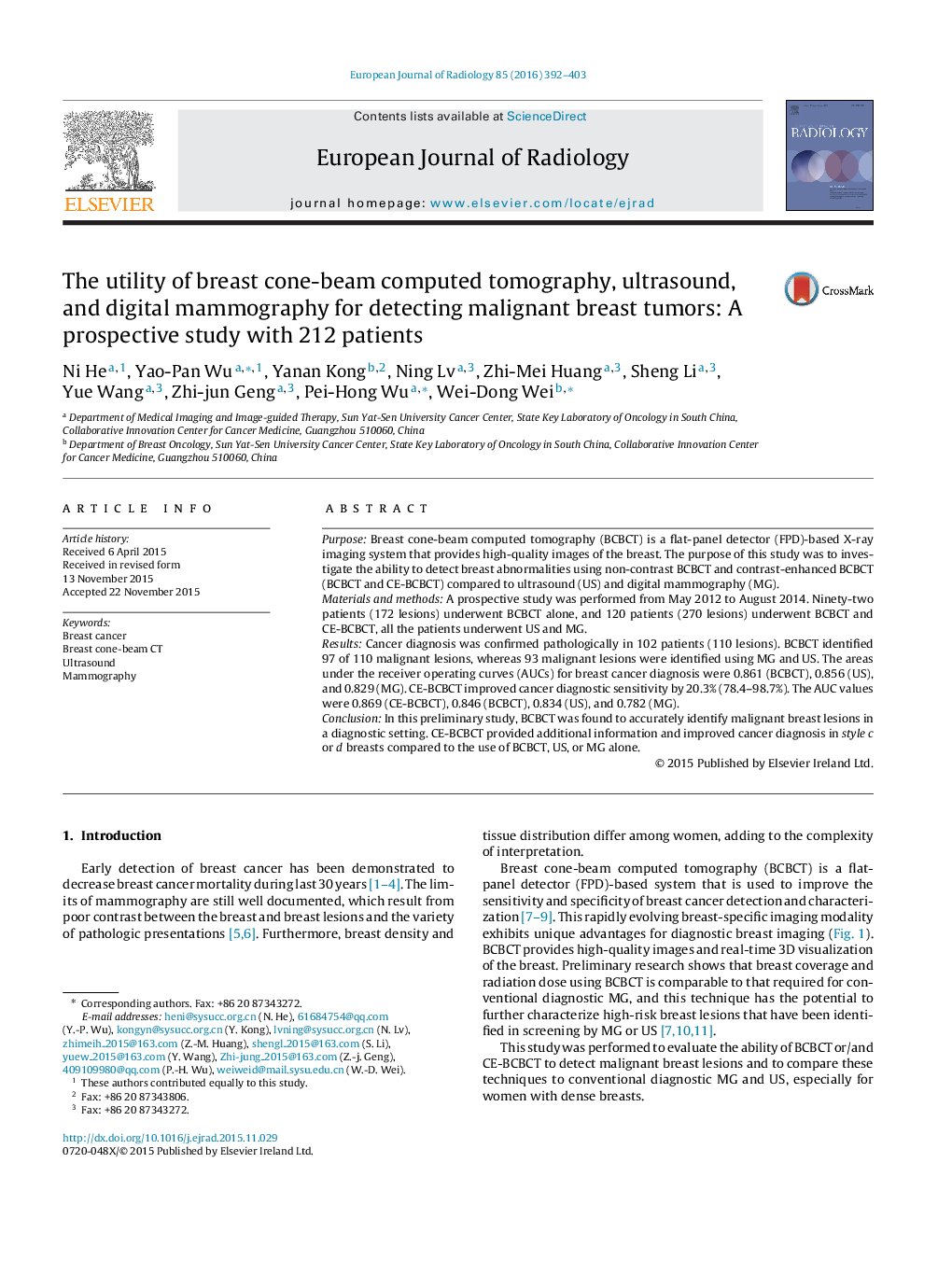| Article ID | Journal | Published Year | Pages | File Type |
|---|---|---|---|---|
| 4225072 | European Journal of Radiology | 2016 | 12 Pages |
•Breast cone-beam computed tomography provides high-quality images of the breast.•BCBCT helps radiologists to diagnose malignant breast lesions.•3D visualization helps clinicians to make a biopsy or surgical plan.•CE-BCBCT improved cancer diagnosis in more dense breasts.
PurposeBreast cone-beam computed tomography (BCBCT) is a flat-panel detector (FPD)-based X-ray imaging system that provides high-quality images of the breast. The purpose of this study was to investigate the ability to detect breast abnormalities using non-contrast BCBCT and contrast-enhanced BCBCT (BCBCT and CE-BCBCT) compared to ultrasound (US) and digital mammography (MG).Materials and methodsA prospective study was performed from May 2012 to August 2014. Ninety-two patients (172 lesions) underwent BCBCT alone, and 120 patients (270 lesions) underwent BCBCT and CE-BCBCT, all the patients underwent US and MG.ResultsCancer diagnosis was confirmed pathologically in 102 patients (110 lesions). BCBCT identified 97 of 110 malignant lesions, whereas 93 malignant lesions were identified using MG and US. The areas under the receiver operating curves (AUCs) for breast cancer diagnosis were 0.861 (BCBCT), 0.856 (US), and 0.829 (MG). CE-BCBCT improved cancer diagnostic sensitivity by 20.3% (78.4–98.7%). The AUC values were 0.869 (CE-BCBCT), 0.846 (BCBCT), 0.834 (US), and 0.782 (MG).ConclusionIn this preliminary study, BCBCT was found to accurately identify malignant breast lesions in a diagnostic setting. CE-BCBCT provided additional information and improved cancer diagnosis in style c or d breasts compared to the use of BCBCT, US, or MG alone.
